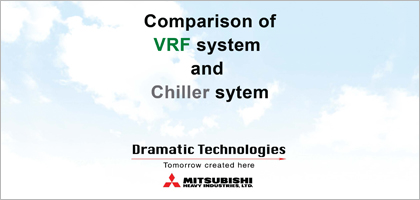Commercial and industrial sectors in the Philippines consumed 29% and 34% respectively of the total electricity consumption of the country. For the commercial sector, 85% of the consumers are in Luzon with malls having the highest Energy Performance Index (EPI) at 456, office buildings (2-3 shifts) at 286, and office buildings (1 shift) at 188. Compared to countries like Malaysia and India, a Philippine office building EPI is 11% to 22% higher; 16% versus a Green Building in India and 19% higher than the Malaysian target. (1)
So where do we get most of our energy from? The power system of the Philippines is generated mainly from the burning of coal, oil, diesel and natural gas despite the potential from solar, hydropower and geothermal energy development. According to the Intergovernmental Panel on Climate Change of the United Nations, 'Right now, coal, oil and natural gas power the economies of the world; almost all modern human endeavor produces carbon dioxide.'(2)
Although the Philippines has a relatively low per capita emission of 0.8 tons, total CO2 emissions is expected to increase. (3) From 1992 to 2010, CO2 emissions from the consumption of energy increased by 86% placing the Philippines at 41st among 217 countries.(4)
There are several programs being implemented such as the Green Building Program of the International Finance Corp of the World Bank, LEED, BERDE, Philippine Energy Efficiency Project of the Department of Energy which all seek to encourage and mandate the use of 'green' principles and energy efficient technologies in the construction and management of commercial buildings.
Improved heating, ventilating and air conditioning (HVAC) technologies using the variable refrigerant flow (VRF) system is one such tool that can be used to reduce our CO2 emissions further.
What is VRF?
A VRF system works by simultaneously cooling and heating different zones in a building. A compressor unit, typically installed on the roof, cools and heats the refrigerant gas R410A passing through the indoor pipes to condition the building. All VRF systems use sophisticated controls to remove the heat from one side of the building and transfer the heat to part of the building that are cooler and need heating. Temperature control and air conditioning are affected by the sun's position relative to the building and internal loads that change through out the day as people move to different areas of the building. Conventional HVAC like the water-cooled chiller systems do not adapt well to these solar and occupancy load changes.
Cost and Energy Savings with VRF
Commercial buildings have the best potential for energy efficiency and savings. In a survey conducted by the IFC for its Green Building Program, the total potential energy efficiency investment requirement is PhP 2.3B or $63M; with malls and office buildings having the highest potential. The average potential savings of 20% and investment requirement per gigwatt hour (GWh) of PhP 15M can be achieved with lighting and HVAC retrofits, and better control systems. (5)
Many of the VRF systems in the market offer significant improvements in energy efficiency, with energy savings of between 30% and 60% relative to older inefficient systems. However, cost and energy savings plus paybacks for the investments in VRF systems may vary for retrofit projects and new buildings.
Best Candidates for VRF Systems
Older buildings in Metro Manila are the best candidates for retrofitting with VRF systems because units can be added on to or can replace existing air conditioning equipment even with limited space and ductwork. Historic buildings also benefit from retrofitting with a VRF system, as there is minimal structural disturbance during installation.
Ease of installation, lower floor-to-floor height and opportunities for LEED credit points in the areas of Energy & Atmosphere and Indoor Environmental Quality make the VRF system the best HVAC option for new buildings.
However, not all project types are suitable for VRF. Large open spaces such as exhibit and convention halls, gymnasiums and warehouses may find water-cooled chiller systems more energy efficient and cost effective.

Sources
1 Verdote, Noel N. "Commercial and Industrial Sector - Energy Efficiency Overview." 2nd Philippine Energy Efficiency Forum. Manila: International Finance Corporation, 2012.
2 UN Framework Convention on Climate Change. Feeling the Heat: Cliamte Science and the Basis of the Convention. http://unfccc.int (accessed October 2013).
3 UN Stats. Carbon Dioxide Emissions (CO2), thousand metric tons of CO2 (CDIAC). http://mdgs.un.org (accessed November 2013).
4 US Energy Information Administration. Carbon Dioxide Emissions from the Consumption of Energy. http://www.eia.gov (accessed October 2013).
5 Verdote, Noel N. "Commercial and Industrial Sector - Energy Efficiency Overview." 2nd Philippine Energy Efficiency Forum. Manila: International Finance Corporation, 2012.
